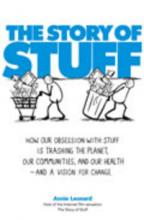While standing in the Musée d'Orsay, admiring The Church at Auvers by Vincent van Gogh, the Doctor notices the image of an alien creature in the church windows where there should be none. A quick trip back to 1890 reveals more than what the Doctor and Amy bargained for. It's an adventure - and a journey - for "Vincent and the Doctor", episode 10 of the 2010 series of Doctor Who, and one of the most remarkable and triumphant installments in the show's long history.
Arriving in 1890, Amy and the Doctor find van Gogh (Tony Curran) penniless, depressed and the laughing stock of Arles. But they have bigger problems; a young woman's mutilated body is found in the city streets, and Amy is attacked by the killer - a monster that only Vincent can see, and the same creature he painted in The Church at Auvers. The Doctor promises to help van Gogh stop the alien, after which he and Amy will leave. Vincent's depression overcomes him, sick to the heart of ending up alone - but he takes comfort from Amy, since he recognizes that she, too, is sorrowful, but soldiers on. Confronting the monster, the Doctor realizes that it is blinded (and was abandoned by its pack), before Vincent kills it in self-defense, mournfully observing that he and the creature were alone and misunderstood by the world around them.
As Vincent explains how he sees the world - swirls of color and light, nature itself screaming at him - the Doctor recognizes a kinship between him and van Gogh. He takes the painter to the Musée d'Orsay in 2010, to show Vincent that his work becomes universally loved and admired. Vincent is overwhelmed, this time by joy, and after returning to 1890, he, the Doctor and Amy happily part ways. Back in the present, Amy is crushed to find that van Gogh still took his own life at the age of 37, and laments that their time with him meant nothing. The Doctor feels otherwise, pointing out that the alien no longer haunts the church windows in The Church at Auvers, and Vase With 12 Sunflowers now bears a dedication: "For Amy".
Leaving aside the alien of the week (which looks like a giant CGI chicken), the absolute strength of this episode comes from Richard Curtis' script and Tony Curran's living, breathing performance as Vincent van Gogh. At times it seems like Matt Smith and Karen Gillan are merely along for the ride, while Curran writhes in mental anguish on his small bed, tearfully ordering the Doctor out of his room, or standing in the Musée d'Orsay listening to the uncredited Bill Nighy saying "van Gogh is the finest painter of them all, the most beloved", who used his "passion, pain to portray the ecstasy, joy and magnificence of our world." As the camera spins around van Gogh and the music builds, yes, it's sentimental and saccharine; yes, it's not science fiction or classic Doctor Who, but this is far better that that. It's a testament to beauty, to art, to hope, to rising above our nightmares and creating something that will touch a life and change the world in some small way. That Doctor Who can go from a story about reptilian humanoids living underground, to giving one of the most famous painters in history something to smile about in the last year of his depressed life, is what has made the show one of the best of all time.
But while Vincent finds himself, how does Amy cope with a loss she can't remember? The three reminders for us - the Doctor being extra nice to Amy, van Gogh pointing out her tears and the Doctor accidentally referring to Vincent as "Rory" - are subtly done, and ensure that the recurring themes of the series continue without breaking the narrative flow of the episode. Not having Rory constantly underfoot helps, too. "Vincent and the Doctor" is honestly too good an episode to bog down with cracks in time, or mysterious prophecies about silence. All that can wait - the real story here is Tony Curran as Vincent van Gogh, whose performances of passion and madness, brilliance and depression are as vivid and vibrant as the paintings of van Gogh himself.
If this is the only one of Doctor Who's 767 episodes you see, watch it for the final act - Vincent seeing a lifetime of desolation and frustration washed away by an eternity of adulation and recognition, and the Doctor convincing Amy that life is about making the good moments mean more than the bad ones, even if they're outnumbered. At times, the emotion is dialed up a notch too high, and there's nothing like an indie rock song to take you out of the moment. But at 4.5/5, it's really hard to argue with an episode that's as good as "Vincent and the Doctor".





